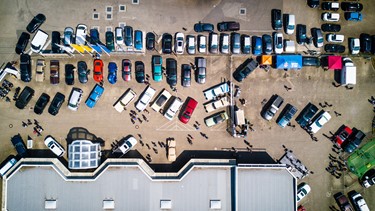Parking's Frictionless Future Has Arrived
By Michael Flanagan, SKIDATA

Parking has often posed significant challenges for developers and property owners. In the past, it hasn’t always been easy to provide the most convenient, customer-friendly experience while keeping parking manageable and profitable. The good news is those challenges are now things of the past because of the introduction of frictionless parking.
Frictionless parking, which is the hottest trend in parking today, combines a number of different technologies to offer a completely hands-free experience for parkers. Not only does frictionless parking provide a much better parking experience, it also provides owners a significant competitive edge by making parking facilities more attractive to customers. This is no small consideration for owners who rely on their parking facilities to generate revenue, or those who rely on parking as an amenity to attract tenants. At the same time, the combined parking technologies make parking much easier to manage.
Frictionless parking can be tailored to the unique needs of any parking owner, and it can be utilized in both garages and parking lots. Frictionless suites are typically customized by combining those technologies that best meet a building’s or complex’s requirements. The foundation of a frictionless parking system is always parking access & revenue control (PARCS) equipment because that technology is the key to providing access to and allowing egress from a parking facility.
In addition to PARCS, the most common types of technologies in a frictionless parking suite are license plate recognition equipment, parking guidance technology, and a reservation or pay-per-use platform. Frictionless parking also can include mobile payment technology, though that’s typically present in the reservation platform.
A Better Parking Experience
For parkers, the frictionless parking experience often begins at home. Before heading to the parking facility the parker goes online and reserves a space. As part of the transaction, the driver inputs his or her license plate and credit card information. Then, when the driver enters the garage or lot, the LPR technology recognizes the vehicle, associates it with the transaction, and the meter starts running. If the facility has a parking guidance system, a series of sensors and signs directs the driver to an available parking space. When it’s time to leave, the parker just drives to the exit and the LPR recognizes the vehicle and raises the gate. The system also calculates the fee and charges the driver’s credit card.
Benefits Owners And Their Operators, Too
It’s easy to see why drivers would appreciate the convenience, safety, and stress-free experience that frictionless parking technology provides. But parking owners and their parking operators benefit just as much.
The most obvious benefit is that facilities with frictionless parking have a significant competitive edge, particularly in closely developed areas where there are typically many complexes competing for the same customers. Drivers, particularly those who commute or visit a particular city often, will gravitate toward garages and lots that provide the most convenient and enjoyable experience. Drivers want to feel safe, they don’t want to experience the stress of searching for parking, and they don’t want to wait in queues to exit when they are ready to go home. Frictionless parking eliminates these hassles.
Another important operational benefit is that frictionless technology makes parking safer. When drivers are guided directly to available spaces, cars aren’t circling garages looking for spaces, which dramatically reduces the risk of collisions between vehicles or between vehicles and people who have already parked. Thus, parking owners and operators can reduce their liability. Another financial benefit is frictionless parking is completely automated, which eliminates the cost of staffing parking facilities, including salaries, benefits, and insurance. Automating the process also eliminates the risk of employee theft or injury.
There are also other, more subtle ways that owners and operators benefit, and these revolve around the technologies that make up the frictionless suite. For instance, parking guidance technology promotes full occupancy by reducing the risk that drivers will get exasperated because they can find parking and leave. Traditionally, owners and operators have considered their facilities full when they achieve 85 to 90 percent occupancy because there are always spaces that go undiscovered. Being able to fill those additional 10 to 15 percent of spaces that might otherwise go unused can result in tens of thousands of dollars in additional parking revenue every day.
The software that manages parking guidance systems also provides operational benefits by recording utilization data for all of the spaces in the facility. Parking owners and operators can find out with the click of a computer mouse what their typical occupancy is, when peak times are, and when the slowest times are. This information can be used to institute dynamic pricing, better manage parking permits, or reallocate spaces for different uses, such as handicap parking, valet, and other specialized uses. We live in an information age and the parking technology that comprises the frictionless parking suite can obtain invaluable data to help owners and operators operate their parking facilities much more efficiently and effectively.
The Future Is Now
Technology has transformed the parking industry and frictionless parking is today’s hottest parking trend. For building owners and developers, frictionless parking represents parking’s future, and that future has arrived.
About The Author
Michael Flanagan is a parking technology and industry expert with SKIDATA. Michael Flanagan can be reached at Michael.Flanagan@skidata.com.
